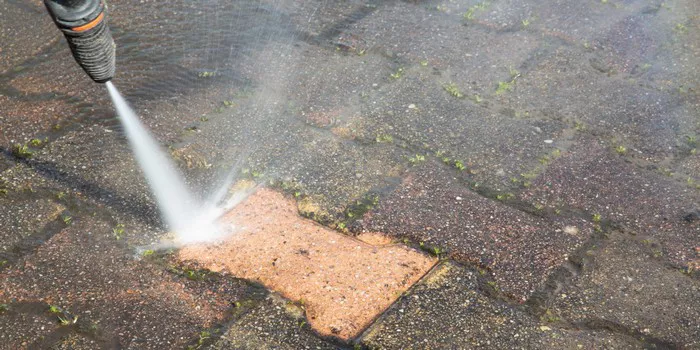Concrete surfaces, while durable and long-lasting, are not immune to the buildup of dirt, grime, and stains over time. Whether it’s your driveway, patio, or sidewalks, maintaining clean concrete not only enhances the aesthetic appeal of your property but also prolongs its lifespan. Power washing is a highly effective method for deep cleaning concrete, restoring its original luster and freshness.
Safety Precautions:
Safety should always be the top priority when power washing concrete surfaces. Before diving into the task, ensure you are properly equipped with safety gear including goggles, gloves, and sturdy footwear. Remember, a power washer is a powerful tool, so never point it at people, pets, or fragile objects.
Choosing the Right Equipment:
When it comes to power washing concrete, selecting the appropriate equipment is crucial. There are different types of power washers available, including electric and gas-powered models. For most residential applications, an electric power washer should suffice, offering sufficient pressure without the added hassle of dealing with gas. However, for larger areas or heavy-duty tasks, a gas-powered unit might be more suitable.
Pressure settings and nozzle types are also important considerations. For concrete surfaces, you’ll typically want to use a higher pressure setting, but be cautious not to go too high as it can damage the surface. A pressure of around 2000 to 3000 psi is usually adequate. As for nozzles, a 25-degree nozzle is commonly used for general cleaning, while a 15-degree nozzle can provide more concentrated pressure for stubborn stains.
Preparation:
Before firing up the power washer, take the time to prepare the area to be cleaned. Remove any obstacles such as furniture or potted plants, and sweep away loose dirt and debris using a broom. This initial step will not only make the power washing process more effective but also prevent debris from getting caught in the power washer and causing damage.
Applying Detergent (if needed):
For heavily soiled or stained concrete surfaces, using a detergent specifically formulated for power washing can significantly enhance cleaning results. Apply the detergent evenly over the surface and allow it to sit for a few minutes to penetrate and loosen grime. Be sure to follow the manufacturer’s instructions regarding dilution and application methods to achieve the best outcomes.
Technique:
Mastering the proper technique is key to achieving a clean and uniform finish when power washing concrete. Start by holding the nozzle at a consistent distance from the surface, typically around 12 to 18 inches. Maintain this distance throughout the cleaning process to ensure even pressure distribution. Use overlapping strokes to cover the entire area systematically, working from one end to the other. This technique will prevent streaks and ensure thorough cleaning.
Rinsing:
After power washing, it’s crucial to thoroughly rinse the concrete surface to remove any leftover detergent or debris. Begin at the highest point and work your way downwards to prevent streaking. Pay special attention to corners and edges where dirt and detergent residue may accumulate. A thorough rinse will leave the concrete looking clean and pristine.
Drying Time:
Once the power washing is complete, allow the concrete surface ample time to dry completely. The drying time can vary depending on weather conditions such as temperature and humidity. In optimal conditions, the concrete may dry within a few hours, but in less favorable conditions, it could take up to a full day. Avoid walking or placing objects on the wet concrete until it is fully dry to prevent any damage or marks.
Maintenance Tips:
To keep your concrete surfaces looking their best, regular maintenance is key. Sweep the area regularly to remove dirt and debris buildup, which can dull the appearance of the concrete over time. Additionally, consider performing occasional touch-ups with the power washer to remove stubborn stains or refresh the surface. By staying on top of maintenance tasks, you can prolong the lifespan and beauty of your concrete surfaces.
Environmental Considerations:
While power washing is an effective cleaning method, it’s essential to be mindful of environmental considerations. Be aware of local regulations and restrictions regarding water usage and runoff, especially if you’re using detergent or cleaning agents. Whenever possible, choose eco-friendly cleaning products and avoid excessive water wastage. By taking these precautions, you can minimize your environmental impact while still achieving sparkling clean concrete surfaces.
Troubleshooting:
Despite your best efforts, you may encounter some common issues during the power washing process. Streaking is a common problem that can occur if the detergent is not rinsed thoroughly or if the nozzle is held too close to the surface. If streaking occurs, simply re-rinse the affected area until the streaks are gone. Uneven cleaning may also occur if the nozzle is not held at a consistent distance or if the pressure settings are incorrect. To remedy this, adjust the nozzle distance and pressure as needed to ensure uniform cleaning across the entire surface.
Conclusion
By following these expert tips and techniques, you can master the art of power washing concrete surfaces and achieve professional-quality results every time. Remember to prioritize safety, choose the right equipment, and employ proper techniques to keep your concrete looking clean and pristine for years to come.

